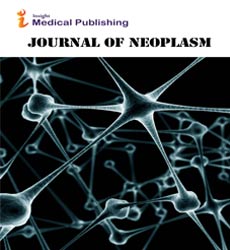Feasibility of a Patient Choice Guide for Shallow Basal Cell Carcinoma
Bagnio Stubs
Department of Oncology, University of Sao Paulo, Sao Carlos, Brazil
Published Date: 2023-12-07DOI10.36648/2576-3903.8.4.47
Bagnio Stubs*
Department of Oncology, University of Sao Paulo, Sao Carlos, Brazil
- *Corresponding Author:
- Bagnio Stubs
Department of Oncology,
University of Sao Paulo, Sao Carlos,
Brazil,
E-mail: Stubs_B@gmail.com
Received date: November 06, 2023, Manuscript No. IPJN-23-18303; Editor assigned date: November 09, 2023, PreQC No. IPJN-23-18303 (PQ); Reviewed date: November 23, 2023, QC No. IPJN-23-18303; Revised date: November 30, 2023, Manuscript No. IPJN-23-18303 (R); Published date: December 07, 2023, DOI: 10.36648/2576-3903.8.4.47
Citation: Stubs B (2023) Feasibility of a Patient Choice Guide for Shallow Basal Cell Carcinoma. J Neoplasm Vol.8 No.4: 47.
Description
The significance of individualized care for patients with Basal Cell Carcinoma (BCC) is emphasized by various treatment choices accessible, particularly for shallow BCC. A BCC can be effectively treated with any treatment. While medical procedure shows the most minimal repeat rate, harmless therapies could offer advantages concerning corrective outcomes, secondary effects, or effect of therapy. The most common type of skin cancer is Basal-Cell Carcinoma (BCC), which is also known as basal-cell cancer, basalioma, or rodent ulcer. It typically presents as a painless raised area of skin that may be shiny and have small blood vessels running over it. It may also present as a raised area with ulceration. Basal-cell cancer grows slowly and can cause damage to the tissue surrounding it, but it is unlikely to spread.
Influences of Basal-Cell Cancer
Schooling might be given by any medical care proficient who has attempted proper preparation instruction, instruction on understanding correspondence and instruction is typically remembered for the medical care proficient's preparation. Notwithstanding, further preparation is expected to foster expert abilities expected to work with self-administration and conduct change. Patient training can frequently be more compelling in quiet understanding that things, for example, drug guides. Numerous organizations are calling for courses in teaching clinical understudies in specialized correspondence to advance patient schooling and the resulting benefits. Significant components of patient instruction are ability building and obligation: Patients need to know when, how and why they need to make a way of life change. Collective endeavor is similarly significant: Every individual from the patient's medical care group should be involved. It can likewise help the patients by a superior way of life, it empowers them to learn new data. It stays hazy whether sunscreen influences the gamble of basalcell cancer. Therapy is normally by careful removal. This can be by straightforward extraction assuming the disease is little; in any case, Mohs medical procedure is for the most part recommended. Different choices incorporate electrodesiccation and curettage, cryosurgery, skin chemotherapy, photodynamic treatment, laser medical procedure or the utilization of imiquimod, a skin resistant enacting medication. In the uncommon cases in which far off spread has happened, chemotherapy or designated treatment might be utilized.
Patient Decision Aids
Patient Decision Aids (PDA) are devices intended to help patients and doctors in settling on medical care choices. PDAs give significant data on treatment choices and assist with explaining values related with various highlights of medicines and impart inclinations. Given great quality proof appearance that executing a PDA for patients with different infections worked on patients' information on their sickness and therapy choices, patients' gamble evaluation of therapies and diminished the degree of decisional struggle encompassing a wellbeing related choice. The benchmark group was incorporated before execution of the PDA and got ordinary consideration. The treating doctor talked about the treatment choices, upsides and downsides of the choices and instructed the patient on sunopenness and self-assessment to the surprise of no one. The physician and the patient then jointly decided on a treatment plan. After considerations for the benchmark group had been finished and before the execution of the PDA, the analyst introduced the PDA to all doctors associated with the treatment of patients with sBCC. After execution of the PDA, the second gathering of patients was incorporated (the PDA-bunch). In the PDA-bunch, like customary consideration, the treating doctor talked about the treatment choices, advantages and disadvantages of the choices, and taught the patient on sunopenness and self-assessment like the benchmark group. Notwithstanding this discussion, members got a web-connection to the PDA that could be utilized at home, at their own speed. Following discussion of the PDA at home, members had a second meeting with their doctor to settle on the common treatment choice. Straightforwardly after the treatment choice was made and before treatment was begun patients of both the benchmark group and the PDA-bunch were approached to finish a few surveys, including the Decisional Conflict Scale (DCS), information poll and personal satisfaction poll.

Open Access Journals
- Aquaculture & Veterinary Science
- Chemistry & Chemical Sciences
- Clinical Sciences
- Engineering
- General Science
- Genetics & Molecular Biology
- Health Care & Nursing
- Immunology & Microbiology
- Materials Science
- Mathematics & Physics
- Medical Sciences
- Neurology & Psychiatry
- Oncology & Cancer Science
- Pharmaceutical Sciences
